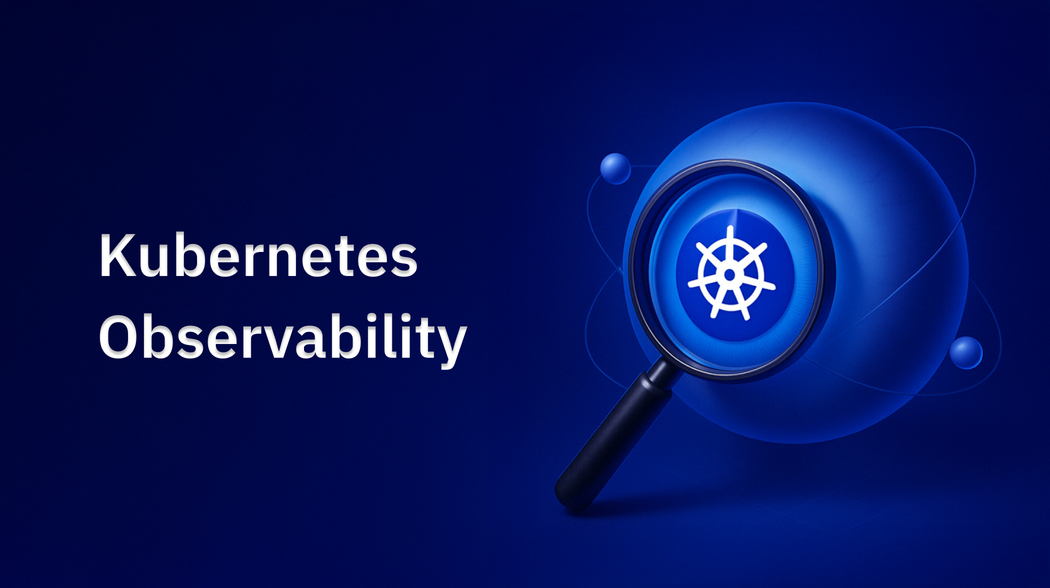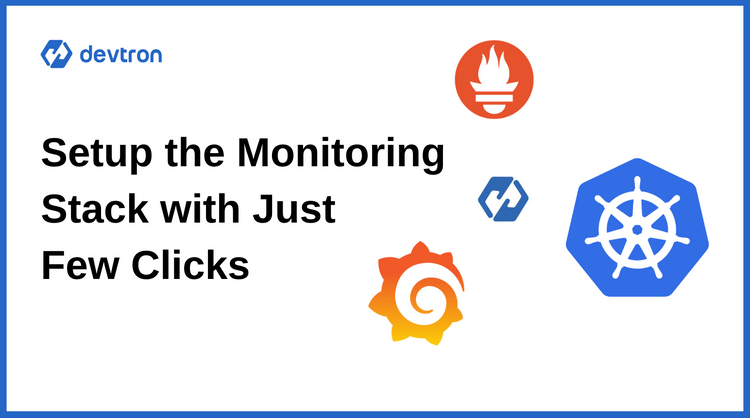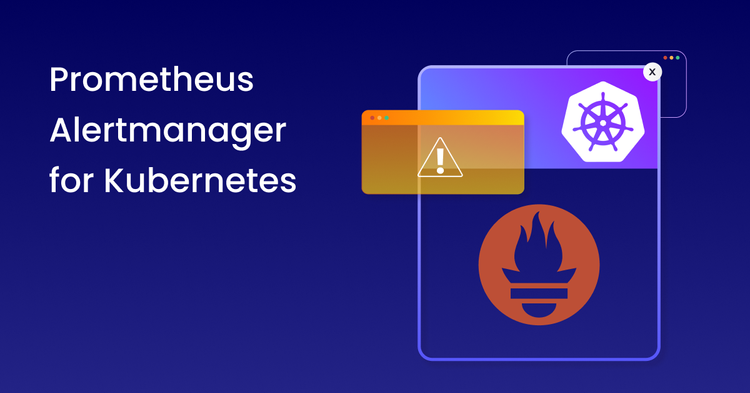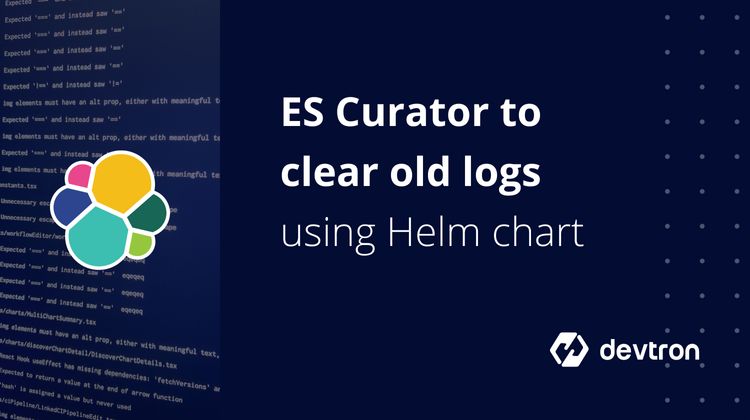Kubernetes has revolutionized how we manage containers and microservices, becoming a cornerstone of modern software systems. However, the dynamic nature introduces a new set of challenges, the challenge of keeping track of actions taking place in these complex dynamic environments.
Kubernetes observability is the process of gaining insights into the dynamic environments of Kubernetes clusters to ensure the smooth and secure operation of cloud-native applications. By implementing proper observability practices, organizations can maintain reliability and performance even in complex and critical environments.
In this blog, we will discuss Kubernetes Observability and how to put it into practice for complex and critical environments.
Monitoring vs Observability
Before diving deep into observability, let's clarify the difference between monitoring and observability. These two domains are often confused or used interchangeably, but they represent fundamentally different approaches to system visibility.
Monitoring involves the collection and analysis of data from various system components, such as nodes, pods, and containers, to understand their performance and behavior.
Observability, on the other hand, goes deeper by collecting and analyzing internal data such as logs, metrics, and traces to provide context about why systems behave in certain ways.
These two domains can be combined to help us understand and operate on the complex systems where monitoring tells us that something is wrong, observability helps us to understand why it's wrong, and how to fix it.
Why Kubernetes Observability?
You can't fix what you can't see.
As modern applications increasingly adopt microservices and run on distributed architectures, gaining visibility into every moving part becomes more critical—and more difficult. Kubernetes, while powerful and flexible, adds another layer of complexity with its highly dynamic and ephemeral nature.
In a typical Kubernetes environment:
- Containers are spun up and torn down in seconds
- Workloads are rescheduled and moved across nodes automatically
- Resources like CPU, memory, and storage are dynamically allocated and reclaimed
- Applications are composed of multiple services spread across pods, namespaces, and environments
- Infrastructure layers—nodes, volumes, ingress controllers—interact in ways that aren’t always obvious
All of this makes traditional monitoring insufficient. Observability in Kubernetes isn't just about seeing that something is wrong—it's about understanding why it’s wrong, where it’s happening, and how to fix it.
Why Observability Matters in Kubernetes
- Faster Root Cause Analysis: Quickly pinpoint whether issues stem from the application, the infrastructure, or Kubernetes itself
- Proactive Incident Detection: Identify anomalies before they turn into outages
- Efficient Resource Usage: Understand real-time workload behavior to optimize cost and performance
- Safe and Reliable Deployments: Monitor the impact of rollouts, canary releases, and configuration changes
- Better Developer Experience: Empower engineers with visibility into their own services without relying entirely on platform teams
In short, Kubernetes observability is not just a nice-to-have; it’s a foundation for building and operating resilient, high-performing systems.
Pillars of Kubernetes Observability
1. Kubernetes Metrics
Kubernetes Metrics provides quantitative measurement of the system, such as memory utilization, CPU utilization, and network I/O. These metrics provide a bird's-eye view of the health and performance of the systems to teams. By monitoring these crucial metrics, engineering teams can quickly identify bottlenecks, anticipate resource constraints, and implement targeted optimizations that enhance overall system performance.
2. Kubernetes Logs
Kubernetes logs function as comprehensive event journals, recording detailed information about actions, changes, errors, and system events throughout the cluster. These records provide engineering teams with crucial context about what happened within containers, pods, and system components.
3. Kubernetes Traces
In the complex Kubernetes systems, Traces helps in tracking the requests as they flow through distributed services in a Kubernetes environment, creating a connected view of each transaction's journey. By capturing the path, duration, and dependencies of requests across multiple microservices, traces reveal how different components interact and where bottlenecks or failures occur.
4. Kubernetes Visualization
Visualization brings together the data collected from metrics, logs, and traces into a single dashboard, presenting it in a way that’s easier to understand and enables teams to take actionable steps.
Challenges in Kubernetes Observability
Kubernetes, by design, is a powerful yet complex orchestration system. Even for deploying a basic application, multiple Kubernetes resources are involved, such as Deployments, Services, Ingress, ConfigMaps, and Secrets. A Deployment, for instance, creates a ReplicaSet, which in turn manages Pods based on the defined specifications. This layered and dynamic architecture makes visibility inherently challenging.
Before diving into the traditional observability pillars, i.e, logs, metrics, and traces, it’s crucial to understand how Kubernetes works under the hood. Real observability in Kubernetes goes beyond just capturing telemetry data. It requires insight into the live state of workloads, control plane actions, and infrastructure behavior. The same flexibility and dynamism that make Kubernetes appealing also make it exceptionally difficult to monitor and troubleshoot.
Let’s explore the major challenges in achieving effective observability in Kubernetes environments:
1. Complex and Interconnected Components
Kubernetes clusters are made up of many interdependent components such as pods, nodes, services, ingress controllers, volumes, and more. These components constantly interact with each other to deliver applications. When something goes wrong, pinpointing the root cause can be extremely difficult. For instance, slow application response times could stem from pod restarts, network bottlenecks, node resource pressure, or even misconfigured probes.
2. Ephemeral Nature of Workloads
Kubernetes is designed for elasticity. Pods come and go, nodes scale up and down, and services are redeployed frequently. This fluidity can disrupt observability tools that rely on static targets or manual configurations. Maintaining accurate and up-to-date monitoring becomes a moving target, especially in large or multi-cluster environments.
3. Lack of Contextual Visibility
Traditional observability tools focus on metrics, logs, and traces, but often lack awareness of Kubernetes-specific contexts like deployments, replicasets, HPA behavior, config rollouts, or node taints. This makes it hard to correlate infrastructure-level data with workload changes, leading to slower debugging and incomplete root cause analysis.
4. High Deployment Velocity
One of Kubernetes’ strengths is enabling rapid, frequent deployments. However, this also increases the surface area for potential issues. New code, configuration changes, or rollout strategies (like canary or blue-green) can introduce performance or stability problems that go unnoticed without real-time observability. Detecting and responding to these issues quickly is critical, but not always easy.
5. Limited Multi-Tenancy Support
In shared Kubernetes clusters, different teams or environments (dev, staging, prod) often coexist. Observability tools that don't support namespace-level access control or fine-grained RBAC make it hard to isolate visibility, potentially exposing sensitive information or overloading users with irrelevant data.
6. Limited Out-of-the-Box Developer Experience
Most observability stacks are built with operators or SREs in mind. Developers often lack self-service dashboards, workload-level views, or context-specific insights that help them debug faster. This creates a dependency bottleneck on platform teams and slows down incident resolution.
Different Ways to Solve Kubernetes Observability Challenges
1. Use Kubernetes-Native Dashboards
For engineers dealing with the day-to-day operations of Kubernetes clusters, visualizing what’s actually happening in real-time is critical. Dashboards like Devtron offer a Kubernetes-native solution that gives deep, contextual awareness into your workloads, not just surface-level metrics.
Here’s how Kubernetes dashboards like Devtron help solve observability pain points:
- Workload Monitoring: Visual insights into pods, services, deployments, and other resources help track application behavior and performance over time. Engineers can identify performance degradation, pod churn, or scaling issues without querying the cluster directly.
- Debugging in Context: When something breaks, engineers don’t need to jump between kubectl, logs, and metrics. Devtron surfaces deployment status, container logs, resource metrics, and recent changes, all tied to the application, enabling faster root cause analysis.
- Operational Management: Kubernetes' declarative model is powerful but doesn’t always offer intuitive feedback. Devtron helps engineers manage deployments, rollbacks, and environment configurations visually, reducing friction while retaining full control.
- Custom Views: Teams can configure dashboards based on namespaces, applications, or environments (e.g., staging vs. prod). This ensures engineers only see what’s relevant to their domain, reducing noise and cognitive load.
2. Automate Troubleshooting with Event Awareness and Remediation Hooks
Kubernetes emits a constant stream of signals, such as resource events, health probes, and lifecycle transitions, but making sense of them manually isn’t scalable. Devtron addresses this by introducing event-aware observability and automation hooks.
- Event Correlation: Engineers can trace what changed in the system (e.g., rollout, HPA trigger, config update) and how it impacted pod status, latency, or failure rates.
- Automated Rollbacks: Instead of waiting for alerts and investigating manually, Devtron allows configuring rollback rules based on health metrics or failed states.
- Cluster Hygiene: Auto-detection of stuck resources (like terminating pods, failed PVCs, or crash-looping jobs) with recommended actions helps engineers maintain healthy clusters without manual sweeps.
3. Correlate Metrics, Logs, Events, and Deployments - Not in Isolation
One of the biggest engineering pain points is context switching between tools for logs, metrics, traces, and deployments. Devtron enables data correlation at the workload level, removing this overhead.
- Root Cause Tracing: See pod restarts, deployment timestamps, and associated config changes in a single timeline. If latency spikes or error rates increase, you can trace back to the rollout that caused it.
- Cross-layer Insight: By combining state (e.g., CrashLoopBackOff), metrics (e.g., CPU saturation), and logs (e.g., stack traces) into a single view, engineers can move from “what’s wrong?” to “why it’s wrong?” much faster.
- Dev-Time to Prod-Time Visibility: Observability isn’t just for production. Engineers can view how the same app behaves across dev, staging, and prod to identify environment-specific issues or misconfigurations early.
4. Move Beyond Traditional Metrics
Metrics give you the “what,” but Kubernetes also demands insight into “how” and “why.” Engineers need observability that extends to control plane events, resource states, and configuration drifts, not just Prometheus charts.
- Control Plane Awareness: Devtron surfaces data like container lifecycle events, OOM kills, readiness probe failures, and ReplicaSet transitions, which aren’t always available through standard metrics pipelines.
- Config & Infra Drift: Drift in configuration or node states (e.g., taints, degraded nodes, network issues) can silently impact application performance. Devtron helps surface such issues without needing external tooling or CLI-based inspection.
- End-to-End Workload Health: Rather than tracking CPU usage in isolation, engineers can assess pod status, replica sync, init container logs, and rollout progress in a unified view.
Conclusion
Logs, metrics, and traces are often cited as the three pillars of observability—and rightfully so. They provide critical telemetry about what’s happening inside your systems. However, in the world of Kubernetes, these alone aren’t enough.
Because of its distributed, dynamic nature, workload visibility becomes a fourth, equally essential dimension. Understanding how your Deployments, Pods, ReplicaSets, and underlying infrastructure behave in real time and how they’re impacted by rollouts, scaling events, or config changes is key to achieving actionable observability.
True Kubernetes observability means going beyond raw signals to gain contextual insight into the lifecycle of workloads. It’s not just about detecting symptoms, it’s about tracing them back to the system behavior that caused them.
Engineering teams need more than dashboards; they need platforms that surface the why behind the what. Devtron brings this layer of visibility closer to the people who build, ship, and operate software on Kubernetes every day.
FAQ
What is Kubernetes observability?
Kubernetes observability is the ability to monitor, trace, and log activity within a Kubernetes cluster to understand system behavior and performance.
Why is observability important in Kubernetes?
It helps detect issues early, optimize performance, and ensure system reliability in dynamic, distributed environments.
What are the key pillars of observability in Kubernetes?
The three main pillars of observability are:
- metrics
- logs
- traces
Which tools are used for Kubernetes observability?
Popular tools include Prometheus, Grafana, Fluentd, Loki, Jaeger, and OpenTelemetry.









